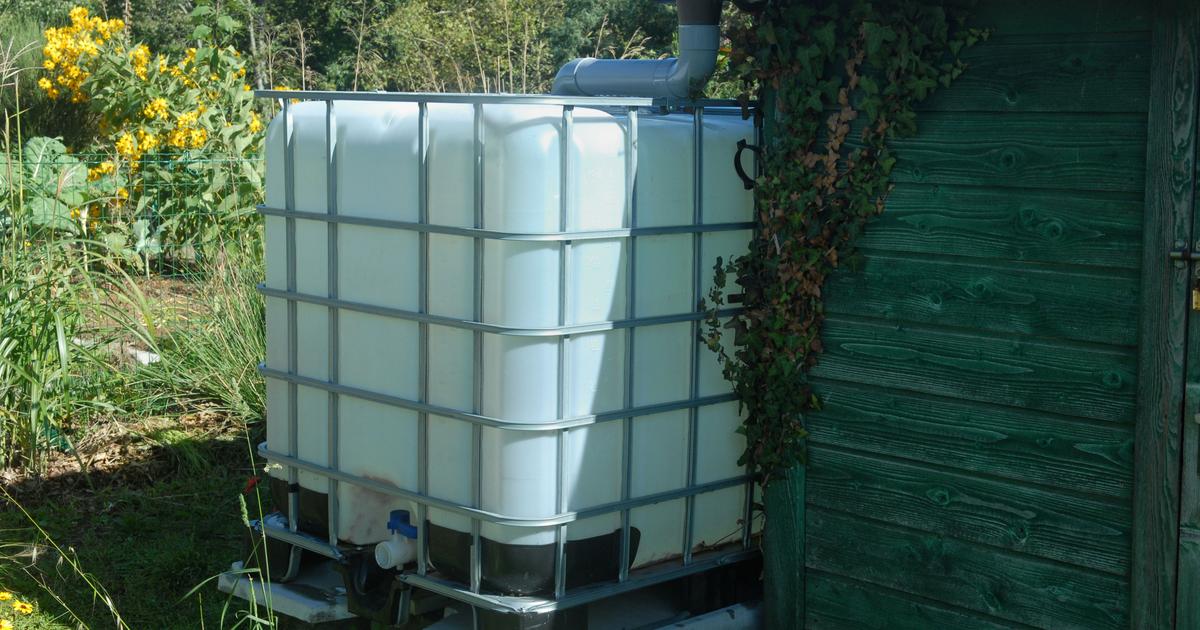Using rainwater allows you to lower your home's water bill and make an ecological gesture.
If you invest in a water collector, it needs, like any container, regular maintenance.
To discover
February: what vegetables and fruits are in season?
How often should you clean the rainwater collector?
As its name suggests, the rainwater collector (there are two categories: the aerial water collector and the buried collector) directly collects the blue gold so that it can be reused to water the plants, the vegetable garden and cleaning garden equipment.
If it is open on the top, the rainwater collector not only collects water but also leaves, small branches, flowers or other elements deposited by the wind in this collector.
And ultimately, any microbes and bacteria can develop in rainwater and reduce its quality.
If it is closed on the top with a lid, items may have also passed through the collection pipe.
In both cases, despite the presence of a filter,
cleaning on average every year or every two years is necessary
, preferably before or after winter.
This is done automatically if an unpleasant odor comes from inside the tank or if the water changes color.
Advice
Check the seals for tightness and if necessary, change them.
The same goes for all other accessories such as the filtration cartridge.
Also check that no cracks have appeared on the walls or pipes, if it is a buried water collector.
How to clean the cistern, filter and gutters?
To ensure that rainwater is kept in the best conditions, cleaning is carried out in three stages: the gutters, the filter and the cistern.
The gutters
Depending on the surroundings, the cleanliness varies.
If the gutter and the collector are isolated, without trees nearby, the first can be cleaned every two years.
Otherwise, you will have to tackle the task once a year to remove all the elements that have been deposited there since the last time.
The entire gutter will thus be cleared of twigs, leaves, insects and other materials which may have remained stuck and would have the effect of making the flow of rainwater into the collector less fluid.
You can first collect them by hand and then pass a high pressure cleaner over the entire surface in question so that the smaller or stuck elements do not resist.
The filter
Strategically placed to make the link between the gutter and the tank, the filter is an essential element of the water collector, which ensures that the water is of the best possible quality.
It blocks debris, pieces of wood or flower petals that could fall into the tank.
It is also recommended to clean the pre-filter at the same time, if you have one.
The cistern
Of course, it is possible to say that only rainwater is lodged there and yet, the interior of the cistern also needs cleaning.
Some debris manages to make its way and fall into the tank, forming sludge over time.
To begin, unplug the pump, then remove the drain plug or pump out the remaining water using a cellar drain so that the water trapped inside the tank drains to the ground.
Once the tank is emptied, clean with a brush, water and soap - in case of bad odors a little bleach can be added to properly disinfect the walls - or pass a high pressure jet from the top of the container so that the walls on the sides and bottom are clean.
Then, replace the cap and reposition the tank in its original place, without forgetting to replace the filter.
Also read: 10 tips for an ecological and economical garden
What product should I use to clean and remove bad odors?
To avoid the presence of bad odors, if your rainwater collector is overhead, you can place a cover on top so that the light does not encourage the formation of algae.
Heat is also a factor in bad odors.
The location of the tank must therefore be considered before installation.
It should be placed in the shade if possible, if it is above ground.
And finally, the debris that has managed to find its way into the heart of the tank can emit unpleasant odors.
If the collector is not protected at the top, you can install a grid to prevent any insects, mosquitoes and other branches from getting into the collected rainwater.
The mud formed after a while at the bottom of the tank can be the cause of odor nuisance.
To preserve the quality of the water and avoid the presence of possible microbes, bacteria or algae, you can add a small quantity of chlorine or bleach.
You can also invest in an aeration system, an air pump or even start a chlorine-free treatment adapted to rainwater.
For prevention, you can also use an organic solution specially adapted for treating rainwater or white vinegar.

